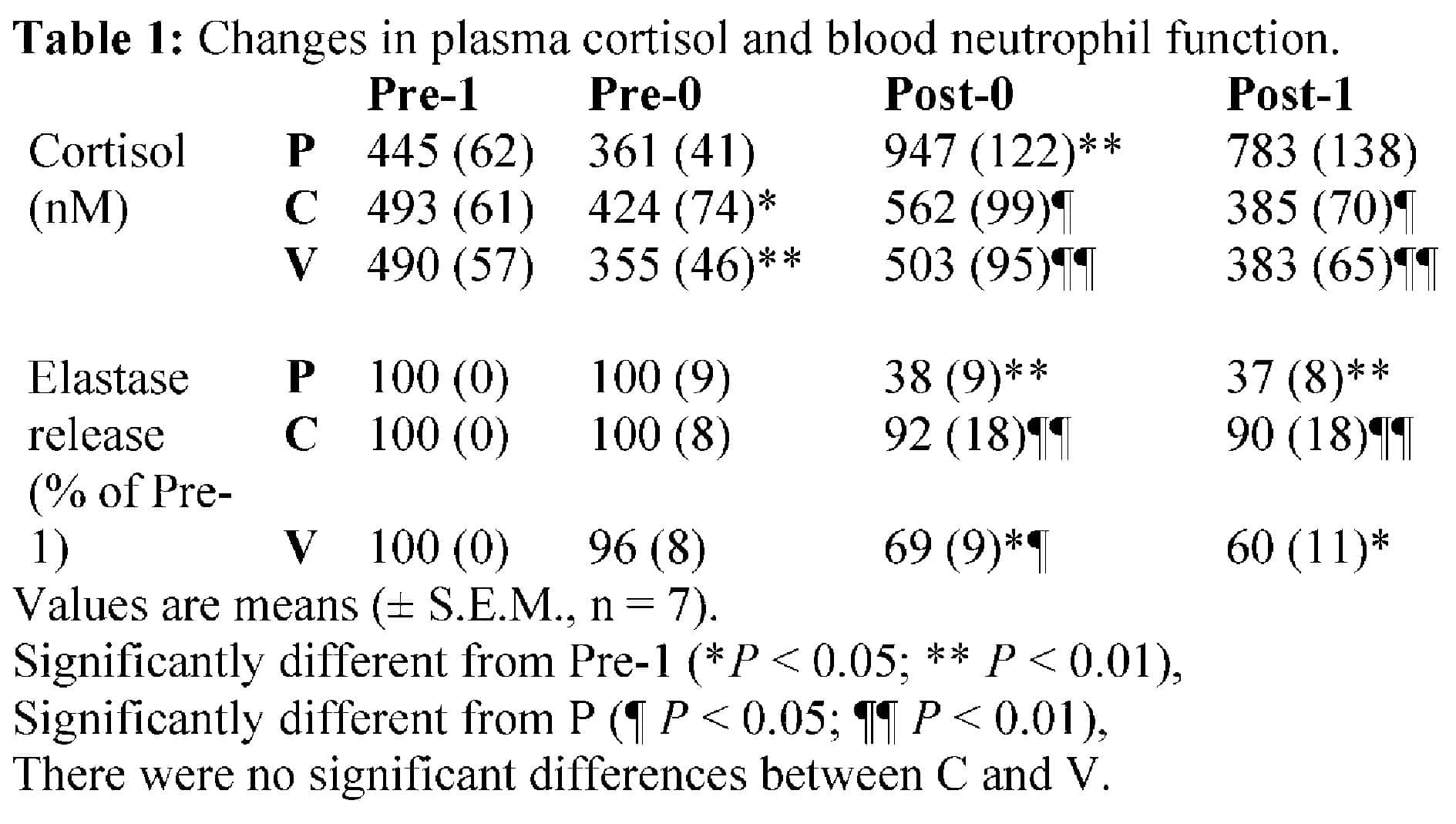Increased susceptibility to infection may arise after endurance exercise owing to an exercise-induced suppression of immune system function. Carbohydrate (CHO) ingestion during exercise attenuates this immunosuppression (Gleeson et al., 2000). Supplementation with a high dose of vitamin C (VC) for a period of 3 weeks may also be beneficial, by increasing plasma VC concentration and so reducing the exercise-induced release of VC and cortisol from the adrenals (Peters et al., 2001) and/or by improving antioxidant defences. The aim of the present study was to investigate the effect of CHO, with or without VC, consumed before and during exercise on the plasma cortisol and neutrophil functional responses.
With local ethics committee approval, 6 healthy men (age 26 ± 2 years, body mass 71.7 ± 2.4 kg, VO 2 max 55.2 ± 1.7 ml.kg -1.min -1; means ± S.E.M.) participated in the study.
After determination of VO 2max and completing a habituation ride they completed three main trials (2.5 hours cycling at 60% VO 2max ). I n a single blind, counterbalanced-crossover design they consumed either a placebo (P), 6% w/v CHO (C) or 6% w/v CHO + 0.15% w/v VC (V) drink in the following volumes: 5 ml.kg -1 body mass 1 hour before and 2.5 ml.kg -1 body mass every 15 minutes during exercise. Venous blood samples were taken before the first drink (Pre-1), immediately pre- and post-exercise (Pre-0 and Post-0, respectively), and 1 hour post-exercise (Post-1). H aematological analysis was performed using an automated cell counter ( Beckman Coulter, UK ). Plasma cortisol concentration was determined using an ELISA kit. The neutrophil degranulation response (Elastase release) to lipopolysaccharide was determined on a per cell basis according to Robson et al. (1999). Results were analysed using a 2-factor repeated measures ANOVA with Tukey post hoc test used where appropriate.
The results (Table 1) support previous findings which suggest that CHO beverage consumption before and during prolonged exercise attenuates the post-exercise changes in immune cell function, probably by maintaining blood glucose and attenuating adrenal cortisol release (Gleeson et al., 2000). However, it appears that the addition of VC to CHO provides no additional benefit. In fact there is a trend for post-exercise (Post-0 and Post-1) neutrophil degranulation to be lower with V compared to C, which is supported by high estimates of effect size (0.429 and 0.447, respectively).

